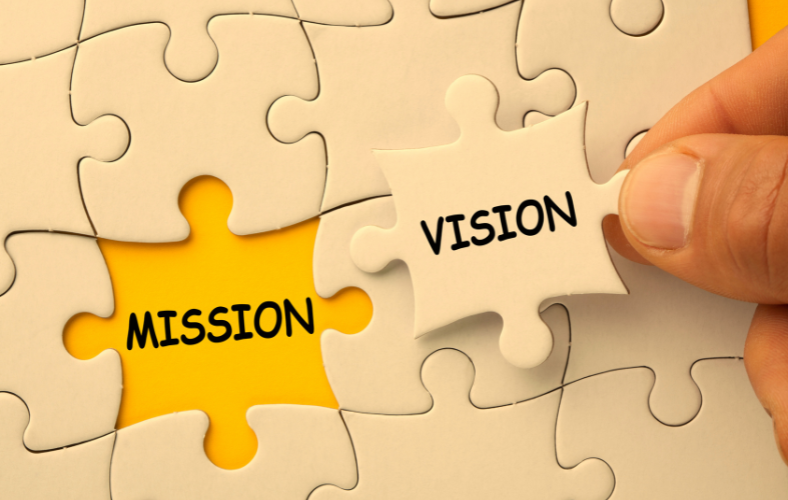EOS, or the Entrepreneurial Operating System, is built around six key components of EOS: Vision, People, Data, Issues, Process, and Traction. Together, these simple tools and proven practices help business leaders run their companies more effectively. EOS is especially valuable for growing businesses with 10 to 250 employees.
When used consistently, EOS helps teams get aligned, solve problems faster, and build strong habits. It’s not a quick fix. It’s a long-term system that supports focus, accountability, and healthy team dynamics. For companies in transition or growth mode, EOS often becomes the backbone of how they operate.
Leadership teams often bring in outside help—like ScaleUpExec outsourced operations leadership—to guide them through EOS and make sure the system is fully integrated into the business.
1. Vision

The Vision component is all about clarity. Everyone in the company needs to know where the business is going and how it plans to get there. EOS uses a tool called the Vision/Traction Organizer (V/TO) to break down long-term goals into simple, focused plans.
This includes defining core values, mission, 10-year target, marketing strategy, and more. A clear vision keeps the team aligned and moving in the same direction.
Without this, teams often drift apart, wasting time and energy on the wrong things. Vision in EOS ensures that doesn’t happen.
2. People
Great businesses need great people. The People component of EOS helps leadership teams make sure they have the right people in the right seats. EOS defines this as people who share the company’s core values and can succeed in their specific roles.
To evaluate this, EOS uses two tools: the People Analyzer and the Accountability Chart. These tools help leaders assess team fit and structure.
For startups still building their teams, a fractional COO drives startup growth by ensuring hiring, structure, and accountability are aligned with the company’s mission and growth strategy.
3. Data
EOS encourages businesses to run on facts, not feelings. The Data component helps teams measure what matters. Each leadership team builds a Scorecard with 5 to 15 measurable numbers that are reviewed weekly.
These numbers track performance in real time. If something is off, leaders can take action quickly—before it becomes a larger issue. Data brings clarity and removes the guesswork from decision-making.
With a strong Scorecard, everyone can see how the company is really doing at any given time.
4. Issues

Every business has issues. The difference is how quickly and effectively they’re solved. EOS includes a simple but powerful method called IDS: Identify, Discuss, and Solve. This process helps teams get to the root of a problem and fix it—without drama or blame.
Issues are tracked on a list and prioritized every week. Teams address them head-on in their Level 10 Meetings. The goal is to create a culture where problems are expected, welcomed, and handled quickly.
This system turns problem-solving into a habit, not a fire drill.
5. Process
Strong businesses rely on repeatable processes. The Process component of EOS helps companies document, simplify, and follow their core processes. These are the key steps that make the business run—like sales, hiring, onboarding, and service delivery.
EOS encourages businesses to create simple checklists or outlines that team members can follow every time. This reduces mistakes, improves training, and saves time.
Over time, clearly defined processes create consistency and allow leaders to delegate with confidence. This is often where the decision between a fractional COO vs full time COO comes into play. A fractional COO is not limited to just building processes—they also maintain and optimize them at scale. The real advantage is gaining access to proven executive talent that most SMBs could never afford to hire full time, but can now leverage at a fraction of the cost.
6. Traction
The final component, Traction, is about execution. This is where the vision becomes reality. EOS helps companies break big goals into 90-day priorities, called Rocks. Each team member owns specific Rocks and reports on progress weekly.
Traction also includes the Level 10 Meeting, a weekly session where leadership teams review the Scorecard, check Rock progress, and solve issues. This rhythm keeps everyone accountable and focused.
Execution is often where businesses fall short. EOS makes it part of the company culture.
Final Thoughts
The six components of EOS—Vision, People, Data, Issues, Process, and Traction—work together to create a strong foundation for growth. Each one solves a common problem that holds businesses back.
When used together, they build a business that runs with more clarity, alignment, and results. Whether you’re just starting EOS or improving your current system, it helps to have the right leadership in place.
For growing companies that need systems, structure, and execution without the cost of a full-time executive, ScaleUpExec outsourced operations leadership or a seasoned fractional COO can lead the charge.
Connect with ScaleUpExec today to see how EOS, guided by top-tier COO talent normally out of reach for most SMBs, can drive growth at less than half the cost of a full-time hire.







